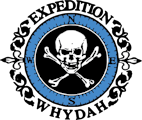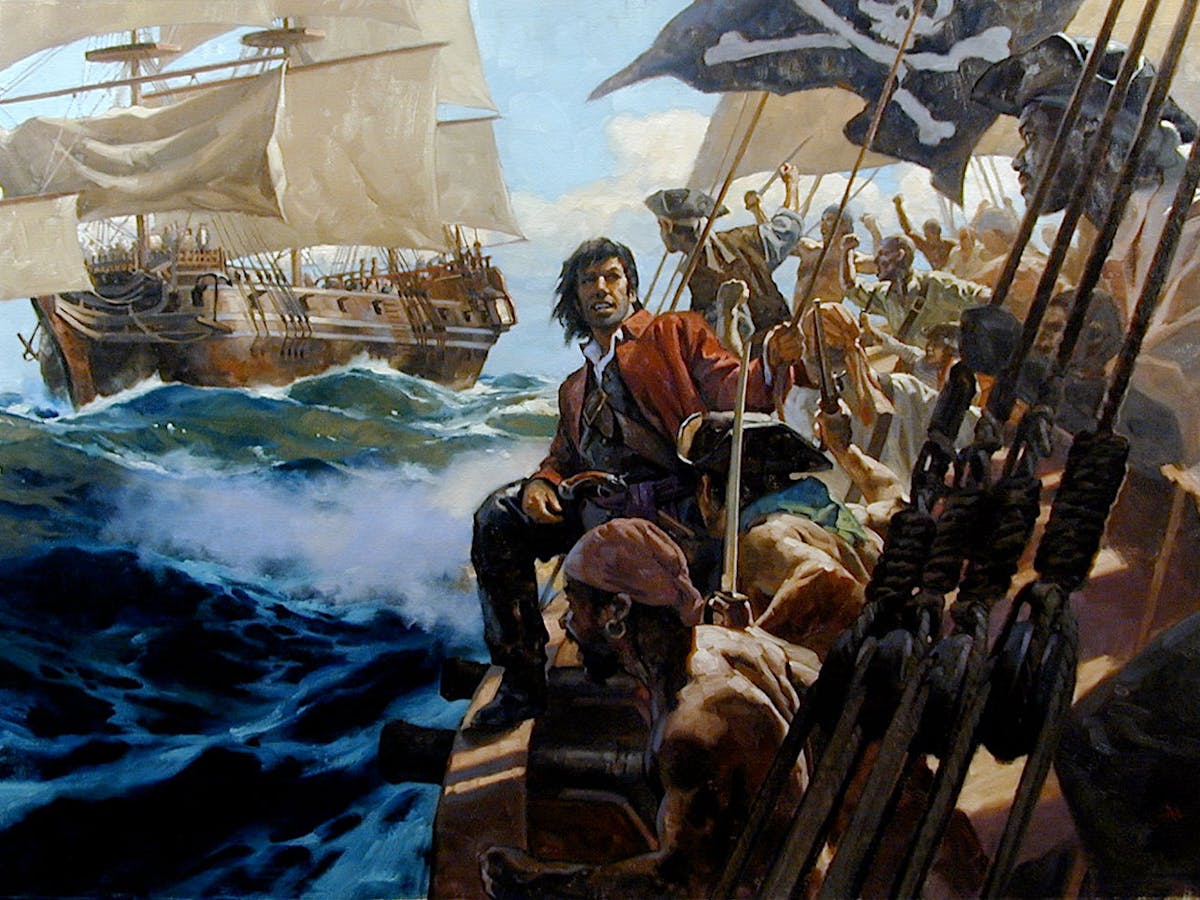The Whydah Gally
The Whydah Gally was built in London in 1715 as a transport for captive humans. It left Africa in 1716, carrying a cargo of enslaved people. After making two voyages under the command of veteran slave-trader Lawrence Prince, pirates captured it while it was homeward-bound in the central Bahamas in January or February of 1717.
Due to its size, speed, and armament, the pirates, led by Samuel Bellamy, commander of a growing fleet of pirate ships, decided to keep the vessel and convert it into their flagship. Bellamy’s multinational pirate crew, comprising nearly two hundred men, had been operating for about a year, capturing dozens of British, French, Spanish, and Dutch merchant ships throughout the Caribbean. They had affiliations with other important pirates of the period, such as Ben Hornigold, Henry Jennings, Oliver Le Vasseur, and the notorious “Blackbeard.”
While sailing up the North American seaboard, the pirate’s new flagship wrecked on April 26, 1717, off the coast of Wellfleet, Cape Cod, during one of the most severe “nor’easters” in New England history. Only two men are known to have survived, making it the worst shipwreck ever to occur on the shores of Cape Cod. Three other vessels in Sam Bellamy’s pirate flotilla were either wrecked or seriously damaged, and authorities captured a number of pirates from these vessels who were eventually tried.




Shortly after the wreck, Governor Shute of Massachusetts dispatched Captain Cyprian Southack, a noted cartographer and commander of the Bay Colony’s naval militia, to salvage what he could for the Crown. Southack found that the ship had capsized and broken up in the storm surf. Wreckage from the ship was quickly swallowed up in the shifting sands of the Cape.
Although Southack recovered little of value from the wreck, his journal and reports to Governor Shute recorded a number of important clues to its location. Utilizing this and other historical evidence, together with cutting-edge electronic remote-sensing technology, a team led by underwater explorer Barry Clifford discovered the wreck site in 1984. Barry Clifford and his team dedicated years of their lives to recovering the artifacts of the Whydah, from cannons and pistols to buttons, buckles, and, of course, pirate treasure: gold, silver, and pieces of eight.
Since the wreck is blanketed with loose sand approaching thirty feet in depth and is less than two thousand feet from shore, and treacherous local sea conditions severely limit boat and dive operations, artifacts are still being recovered in a careful and painstaking underwater archaeological excavation project.
The history of the Whydah encompasses the entire Atlantic world—Europe, Africa, and the Americas—but it holds special significance in North American colonial history, particularly the history of New England. As the first satisfactorily identified pirate shipwreck ever discovered, it provides unique insights into the material culture of 18th-century piracy in the Atlantic world.
When the Whydah Gally was discovered in 1984, the world gained an unprecedented and invaluable resource to study the pirates of the “Golden Age”—one of the most secretive and, consequently, misunderstood societies of the colonial period.
The Whydah Pirate Museum and its affiliated facilities house the largest collection of pirate artifacts ever recovered from a single shipwreck. In addition to recovering and preserving these artifacts, the museum’s mission is to provide educational content that not only engages and teaches students, but also passes on a story that is an important piece of local Cape Cod history.
The True Tale of the Whydah Gally
The story of the Whydah Gally is without parallel. The men who turned the former London slave ship into a pirate flagship were not only among the most successful sea rovers of the “Golden Age of Piracy,” they were also among the most egalitarian, diverse, and democratic.
The Whydah pirates were a brotherhood of poor sailors, former slaves, and political exiles who struggled against an era of institutionalized oppression, exorbitant economic disparity, and limited individual rights. Their daily lives were directly impacted by the effects of constant warfare between monarchs, colonialism, globalism, and the transatlantic slave trade. And yet, this motley crew of different cultures, beliefs, and backgrounds banded together to achieve a degree of freedom, fortune, and equality that society would have otherwise denied them.
The Preservation of Pirate History
While the journey of the Whydah ends tragically for those who were on board that fateful night in April, it is still not the end of the tale. The story of Whydah is also about the explorers, divers, researchers, and archaeologists who raised this adventure from beneath the seafloor and brought it back into the light. The discovery and excavation of the Whydah involves years of persistent searching, historical research, and sustained scientific efforts by dedicated professionals.
Even after three decades since the Whydah’s discovery, this work is still ongoing. Every year, divers continue to investigate the wreck site, archaeologists continue the delicate process of excavating artifacts, and historians continue to dig through record archives looking for undiscovered details about the Whydah and her crew. Those of us at the museum cannot think of a more noble pursuit—to preserve the legacy of ordinary people, whose circumstances pressed them to lead extraordinary lives. That this pursuit can also be used to educate and enlighten students gives us the greatest joy and satisfaction. We hope that the fascinating story of The Whydah Gally will excite audiences young and old and inspire them to explore the past.




